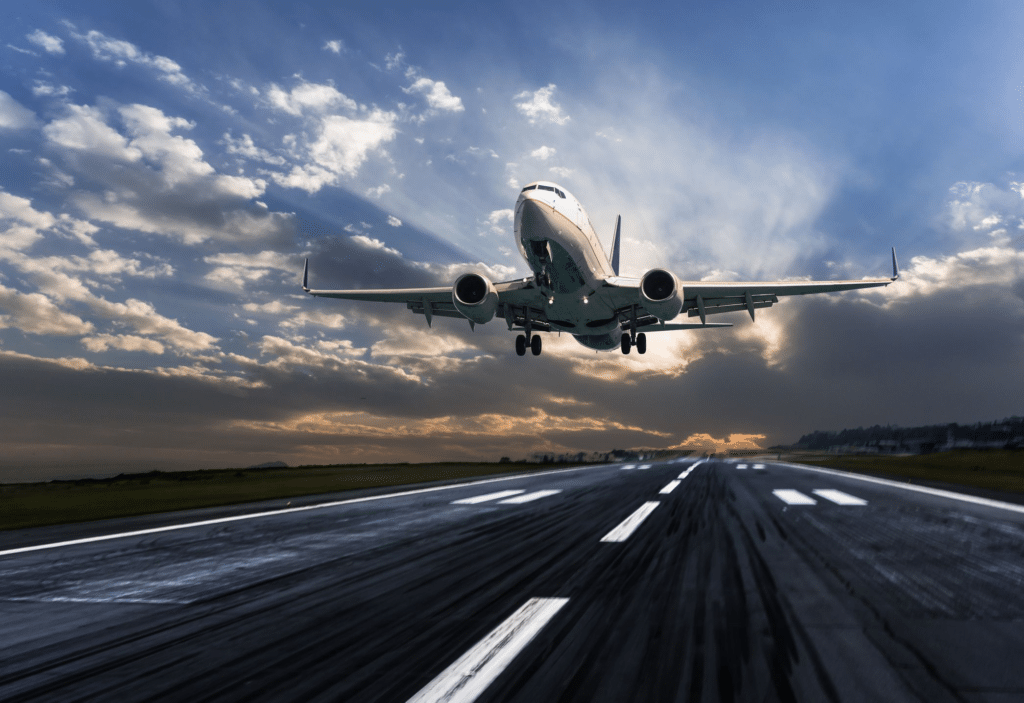
How Can You Create The Perfect Air Travel Plan For Your Next Trip?
Air travel has become an essential part of modern life, whether for business or leisure. The process of planning air travel can often seem overwhelming, especially when considering factors such as flight bookings, packing, transportation to and from airports, and ensuring you arrive at your destination stress-free. However, by following a well-structured approach and utilizing the right strategies, you can create the perfect air travel plan for your next trip. Whether you’re a seasoned traveler or new to flying, this guide will help you navigate the process with ease.
Table of Contents
ToggleKey Takeaways
- Plan Ahead: Start planning your air travel well in advance to secure the best flight options and save on costs.
- Organize Key Documents: Ensure that your passport, visa, and travel insurance are up to date and easily accessible.
- Pack Efficiently: Stick to essential items, check airline baggage policies, and pack a carry-on with important items.
- Choose the Right Flight: Use comparison tools, select convenient flight routes, and choose an airline that meets your needs for comfort and service.
- Post-Arrival Preparation: Ensure that you have your airport transportation and hotel check-in procedures sorted out for a smooth transition after your flight.
Step 1: Set Clear Objectives for Your Trip

The first step in creating a seamless air travel plan is to define the purpose of your trip. This helps you determine many of the key decisions that will affect the rest of your planning, such as flight options, duration, and budget.
- Business vs. Leisure Trip:
- For business trips, you might prioritize flights that fit into your work schedule, have convenient departure and arrival times, and offer comfortable amenities for productivity.
- For leisure trips, flexibility and cost-saving options may be the primary consideration.
- Travel Dates and Duration:
- Determine the dates that work best for you and your travel companions. If you have a flexible schedule, you might be able to save money by flying on off-peak days.
- Destination Research:
- Before booking flights, research your destination to ensure that it’s accessible and safe. This includes understanding visa requirements, weather conditions, and any cultural aspects relevant to your trip.
Step 2: Book Your Flights
Once you have your objectives in mind, the next step is booking your flight. This process can be overwhelming, but by following a systematic approach, you can secure the best flight options.
Use Flight Comparison Websites
- Platforms like Google Flights, Skyscanner, or Kayak allow you to compare flights from multiple airlines, helping you find the best price and schedule.
- Set up alerts on these platforms for your travel dates to get notified of price drops or special deals.
Choose the Right Flight Route
- Direct flights are generally more expensive, but they save time and reduce the risk of delays.
- If you have time to spare, consider layovers to save money or to explore another city during your trip.
- Factor in the time spent during layovers, especially for international flights, as these can sometimes add significant travel time.
Look for Deals and Discounts
- Always look for promotional fares, especially during sales seasons like Black Friday, Cyber Monday, or post-holiday periods. Loyalty programs or credit card rewards can also help you save money on flights.
Select a Comfortable Airline
- When booking, consider the amenities provided by airlines, especially on long-haul flights. Check seat reviews, legroom options, and onboard meals.
- Some airlines are more pet-friendly or offer business-class services that may be essential for certain travelers.
Step 3: Plan Your Airport Transportation
One of the most common sources of stress when flying is getting to and from the airport. Planning your transportation ahead of time can alleviate a lot of this pressure.
Arrange Airport Transfers in Advance
- If you are flying internationally or to a distant airport, consider booking a taxi, shuttle service, or car rental well ahead of time. Many airports offer online reservation systems for both short and long-term parking.
- If you’re traveling domestically, public transport or ride-sharing services like Uber or Lyft are convenient alternatives to renting a car.
Timing Is Everything
- Aim to arrive at the airport at least 2-3 hours before a domestic flight and 3-4 hours before an international flight.
- Factor in potential traffic or delays when planning your departure time to avoid stress.
Step 4: Pack Smartly and Efficiently

Packing is an essential part of air travel planning, and how you pack can make a huge difference in your overall travel experience.
Check Airline Baggage Policies
- Different airlines have different baggage policies regarding weight limits, fees for checked luggage, carry-on restrictions, and prohibited items. Review these guidelines before packing.
- Consider investing in luggage with built-in technology, such as GPS tracking or built-in chargers, for added convenience.
Pack Light and Efficient
- Avoid overpacking by packing only what’s necessary. Stick to versatile clothing that can be mixed and matched, and avoid packing items that are available at your destination.
- Consider packing a small, carry-on bag with essential items like travel documents, electronics, medications, and a change of clothes in case your checked luggage is delayed or lost.
Follow Security Guidelines
- Prepare for security by wearing easy-to-remove shoes and minimizing the number of items in your pockets. Familiarize yourself with the liquid restrictions and have them stored properly in a clear plastic bag.
- Pack any necessary documents, such as passports or visas, in an easily accessible place for efficient processing through security.
Step 5: Organize Travel Documents
Whether traveling for business or pleasure, proper documentation is crucial to ensure that your air travel plan goes smoothly.
Ensure Passport and Visa are Up-to-Date
- For international travel, ensure your passport is valid for at least 6 months beyond your travel dates.
- Apply for any necessary visas or travel authorizations well in advance. Many countries require additional documentation or clearance for entry.
Check Health and Travel Insurance
- Many travelers opt for travel insurance to protect themselves from unexpected situations, such as flight cancellations, medical emergencies, or lost baggage. This is especially important for international travel.
- If you’re traveling with medication or special medical requirements, ensure you have enough supplies for the trip and carry documentation for your prescriptions.
Digital and Physical Copies
- Keep both digital and physical copies of important documents, such as your flight itinerary, hotel reservations, travel insurance details, and identification. Digital copies can be easily accessed in case you lose the originals.
Step 6: Prepare for the Flight Experience

Your flight experience can significantly impact the overall success of your trip, so planning for comfort and convenience is key.
Seat Selection
- When booking, consider the layout of the airplane and choose your seat wisely. If you value comfort, opt for an aisle seat for more legroom or a window seat for privacy and a better view.
- Some airlines offer premium seating with additional perks, such as extra legroom, priority boarding, or access to lounges.
In-Flight Entertainment and Comfort
- Bring along books, movies, or music to keep you entertained during the flight. Many long-haul flights offer inflight entertainment, but it’s always good to have your own backup options.
- Dress in layers to accommodate temperature fluctuations and pack a neck pillow or blanket for added comfort.
In-Flight Meals and Hydration
- Plan your meals, especially if you have dietary restrictions. Many airlines allow passengers to request special meals in advance, including vegetarian, vegan, or gluten-free options.
- Hydrate regularly during the flight and avoid too much caffeine or alcohol, which can dehydrate you.
Step 7: Post-Arrival Planning
Once you’ve landed, it’s important to stay organized and efficient to wrap up the travel experience on a positive note.
Navigating Immigration and Customs
- Follow signs to immigration upon arrival, especially if traveling internationally. Have your passport, visa, and arrival forms ready to streamline the process.
- Be prepared to answer questions about the purpose of your trip and provide any requested documentation.
Airport Transfers and Hotel Check-In
- Have your transportation to the hotel or next destination pre-arranged. Many airports provide airport shuttles to local hotels or transport hubs.
- When you arrive at your accommodation, check in promptly, and ask about the amenities available to make your stay more comfortable, such as free Wi-Fi, transportation options, and local recommendations.
Step 8: Stay Updated on Travel Conditions
In today’s world, air travel conditions can change unexpectedly, whether due to weather, air traffic, or security requirements. It’s essential to stay up-to-date with your flight’s status and external conditions that may affect your journey.
Track Your Flight Status
- Flight Status Apps: Use apps like FlightAware or the airline’s own app to monitor your flight’s status in real-time. These apps can provide updates on delays, cancellations, and gate changes.
- Notifications: Many airlines offer free SMS or email notifications regarding flight status changes. Ensure you sign up for these alerts when you book your flight.
Weather Conditions
- Weather Monitoring: Monitor the weather conditions at your departure and arrival airports, especially if traveling during extreme weather seasons. Some airlines may delay flights or provide alternative travel arrangements in case of adverse weather.
- Prepare for Delays: If you expect weather-related disruptions, plan for extra time at the airport and be prepared for potential delays. It’s advisable to bring snacks, entertainment, and any essential medications in case you’re stuck at the airport for an extended period.
Step 9: Understand and Manage Travel Risks

Traveling, especially internationally, can sometimes involve unexpected risks such as cancellations, lost luggage, or medical emergencies. It’s vital to manage these risks proactively to minimize stress during your trip.
Invest in Travel Insurance
- What It Covers: A comprehensive travel insurance policy can cover flight cancellations, delays, medical emergencies, trip interruption, lost luggage, and even natural disasters that affect your travel plans.
- Travel Insurance for Medical Coverage: If you’re traveling abroad, especially to countries without reciprocal healthcare agreements, make sure your insurance covers emergency medical services.
Have a Contingency Plan
- Emergency Contacts: Keep a list of emergency contacts, including your country’s embassy or consulate, local emergency numbers, and contacts at your accommodation.
- Backup Plan for Lost Luggage: Pack essential items such as toiletries, a change of clothes, and important documents in your carry-on bag. If your luggage gets lost, you can still manage without essential items until your baggage is returned.
Know Your Rights
- Passenger Rights: Familiarize yourself with your rights as a passenger in case of cancellations, delays, or overbooked flights. The European Union, for example, has specific regulations regarding compensation for flight disruptions.
Step 10: Maximize Your Time and Experience at the Airport
Airports can often be stressful, busy places, but with a bit of planning, you can maximize your time there and make your experience more pleasant.
Use Airport Lounges
- Access Lounges: Many airlines offer access to premium lounges, where you can relax in a quieter environment away from the crowded terminal. Some credit cards or loyalty programs may give you complimentary access.
- Amenities: Airport lounges often provide snacks, Wi-Fi, comfortable seating, and sometimes even showers and sleeping pods. If you’re traveling on a long layover or long-haul flight, consider using a lounge to refresh and recharge.
Optimize Security Check
- TSA PreCheck or Global Entry: If you’re a frequent traveler, consider enrolling in programs like TSA PreCheck (for U.S. domestic flights) or Global Entry (for international travel) to expedite the security process. These programs allow you to skip long lines and move through security faster.
- Clear Security Guidelines: Familiarize yourself with what you can and can’t bring through security. Packing smartly and following the guidelines will help you avoid delays during the security screening.
Plan Your Airport Arrival Time
- Early Arrival: Arriving early gives you more time to navigate check-in counters, security, and other potential delays. Consider giving yourself a buffer between your flight’s departure and airport arrival.
- Plan for the Unexpected: Airports can have unexpected delays, like long lines at check-in counters or security. Arriving with plenty of time can help ease any last-minute stress.
Step 11: Consider Airport Services for Convenience

In some airports, there are services that can improve your overall travel experience, such as private terminals, baggage handling, or even personal travel assistants.
Baggage Services
- Priority Baggage Handling: If you’re in a hurry or have important meetings upon arrival, consider paying for priority baggage services. This service helps get your bags off the plane faster.
- Luggage Delivery: Some services can deliver your luggage directly to your hotel, meaning you don’t have to carry heavy bags with you through the airport.
Meet-and-Greet Services
- Personalized Service: If you’re traveling to an important business event or want to make the most of your time at the airport, consider hiring a personal meet-and-greet service. These services typically offer assistance with check-in, security, and immigration, as well as lounge access.
Step 12: Stay Healthy and Energized During Your Trip
Traveling long distances can be exhausting, especially with time zone changes. Taking care of your health during air travel is important for arriving at your destination in good shape.
Avoid Jet Lag
- Adjust Your Sleep Schedule: Start adjusting your sleep schedule a few days before the flight to match your destination’s time zone. Gradually shift your sleeping hours, so you’re in sync with the new time zone.
- Get Sunlight: After arriving, spend time outside in natural sunlight. Sunlight helps regulate your circadian rhythm, helping your body adjust more quickly to the new time zone.
Stay Hydrated
- Drink Water: Airplanes have low humidity, which can cause dehydration. Drink plenty of water throughout your flight to stay hydrated.
- Avoid Excessive Caffeine: While coffee or tea might seem like a good idea to stay awake, excessive caffeine consumption can dehydrate you. Opt for herbal teas or water to keep your hydration levels up.
Stretch and Move During the Flight
- In-Flight Exercises: Avoid sitting in one position for too long. Walk around the cabin when possible, and stretch your legs to avoid stiffness or deep vein thrombosis (DVT).
- Seat Exercises: If you’re unable to move around, perform seat exercises like ankle circles or stretching your arms and legs to improve circulation.
Step 13: Optimize Your Travel Experience with Technology
In today’s digital age, technology can play a significant role in making air travel easier, more efficient, and more enjoyable. From apps that streamline the check-in process to innovations that ensure smoother connections, there are a variety of tools you can use to optimize your travel experience.
Mobile Apps for Easy Booking and Check-In
- Airline Apps: Most airlines offer mobile apps that allow you to check-in, track your flight, and even select your seats. These apps often come with notifications about gate changes, delays, and cancellations.
- Flight Booking Apps: Apps like Hopper, Kayak, and Skyscanner not only allow you to search for the best deals, but some even predict future prices to help you book at the most affordable time.
- Check-In and Boarding Passes: Many airports and airlines offer digital boarding passes that can be added directly to your mobile wallet (Apple Wallet or Google Pay). This allows you to avoid printing boarding passes and ensures you always have easy access to it.
Wi-Fi and In-Flight Connectivity

- Staying Connected: With many long-haul flights offering Wi-Fi, staying connected during your flight is increasingly easier. Make sure to check if your flight offers in-flight internet service and the costs associated with it.
- Offline Entertainment: Download movies, podcasts, and music in advance to enjoy during your flight, especially on longer journeys. Apps like Netflix, Spotify, and Audible allow you to access your content offline during your flight.
Travel Assistance Apps
- Flight Delay Assistance: Apps like TripIt, FlightRadar24, and FlightAware can be used to track your flight’s status. These apps can notify you of gate changes, delays, and cancellations, ensuring you’re always prepared.
- Language Translation Apps: If you’re traveling internationally, apps like Google Translate can help break down any language barriers by translating signs, menus, or even conversations in real-time.
- Currency Converter: Apps like XE Currency help you quickly convert currency at the current exchange rate, which is helpful when traveling internationally.
Also Read: What Are The Best Tips For Air Travel With Dogs To Ensure A Safe Journey?
Conclusion
Creating the perfect air travel plan requires thorough preparation and attention to detail. By following these steps—setting clear objectives, booking your flight, arranging airport transfers, packing efficiently, and organizing your travel documents—you can ensure a smooth and enjoyable experience.
Remember to stay organized, flexible, and proactive. With the right preparation, air travel doesn’t have to be stressful. You’ll not only enjoy a hassle-free journey but also arrive at your destination excited and ready to embark on your next adventure.
Planning air travel is a task that requires attention to detail, patience, and preparation. However, by following the steps outlined above, you can ensure a smooth, comfortable, and enjoyable journey from start to finish. Whether it’s booking the best flight, managing your baggage, or arriving early to avoid delays, a well-executed travel plan can help minimize stress and maximize enjoyment.
FAQs
1. What’s the best time to book flights for the cheapest prices?
- Generally, booking flights 6-8 weeks in advance can help you find the best deals. Tuesdays and Wednesdays are often the cheapest days to fly.
2. How early should I arrive at the airport?
- For domestic flights, aim to arrive 2-3 hours before departure. For international flights, 3-4 hours is recommended.
3. Can I change my flight once I’ve booked it?
- Many airlines offer flexible ticket options, but changes may come with additional fees. Check your airline’s change policy before booking.
4. Should I get travel insurance?
- Travel insurance is highly recommended, especially for international travel or trips involving high costs (e.g., non-refundable hotel bookings or flights).
5. How can I avoid jet lag?
- Adjust your sleep schedule a few days before your flight to match the destination time zone. Drink plenty of water, avoid alcohol, and get sunlight after arrival to reset your body clock.
6. Can I bring my pet on the flight?
- Many airlines allow pets in the cabin or cargo hold. Be sure to check the airline’s pet policy and make arrangements in advance.
7. What do I do if my flight is delayed or canceled?
- Stay calm and check with the airline for rebooking options. If the delay is long, inquire about meal vouchers or other accommodations.


